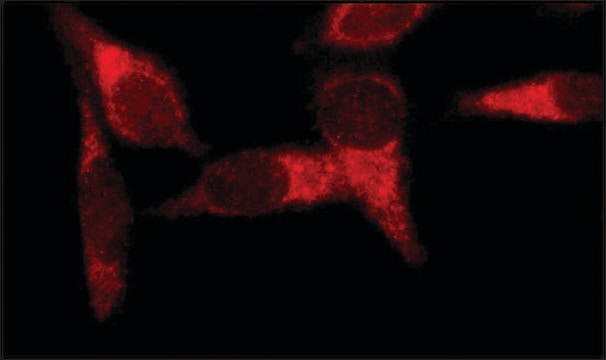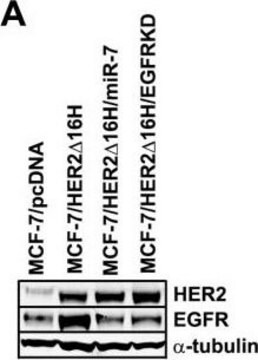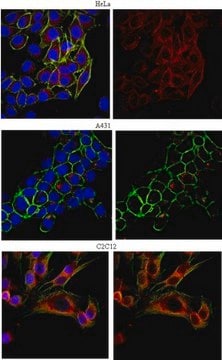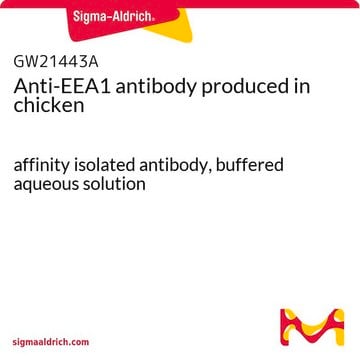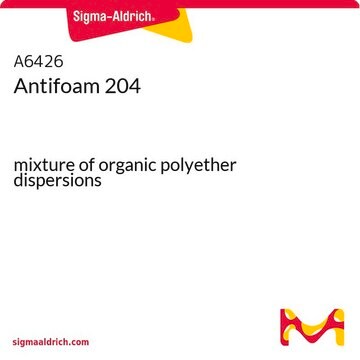This product has not been tested to confirm the light chain. A suitable isotype control for this product is M5409 Mouse IgG2a Isotype Control from murine myeloma, available at https://www.sigmaaldrich.com/product/sigma/m5409.
E7659
Anti-EEA1 antibody, Mouse monoclonal
clone EEA1-N19, purified from hybridoma cell culture
Sinônimo(s):
Anti-MST105, Anti-MSTP105, Anti-ZFYVE2, Monoclonal Anti-Early endosomal antigen 1
Selecione um tamanho
R$ 3.094,00
Selecione um tamanho
About This Item
R$ 3.094,00
Produtos recomendados
fonte biológica
mouse
Nível de qualidade
conjugado
unconjugated
forma do anticorpo
purified from hybridoma cell culture
tipo de produto de anticorpo
primary antibodies
clone
EEA1-N19, monoclonal
Formulário
buffered aqueous solution
peso molecular
antigen ~160 kDa
reatividade de espécies
human, mouse, rat
concentração
~1.0 mg/mL
técnica(s)
immunoprecipitation (IP): suitable
indirect immunofluorescence: suitable
western blot: 1-2 μg/mL using whole extract of rat NRK cells
Isotipo
IgG2a
nº de adesão UniProt
Condições de expedição
dry ice
temperatura de armazenamento
−20°C
modificação pós-traducional do alvo
unmodified
Informações sobre genes
human ... EEA1(8411)
mouse ... Eea1(216238)
rat ... Eea1(314764)
Descrição geral
Aplicação
- immunoblotting
- immunoprecipitation
- cell fractionation[1]
- indirect immunofluorescence
- immunohistochemistry
- Immunoprecipitation
- Indirect immunofluorescence
- Western blotting at a concentration of 1-2μg/mL using whole extract of rat NRK cells
Ações bioquímicas/fisiológicas
forma física
Exoneração de responsabilidade
Não está encontrando o produto certo?
Experimente o nosso Ferramenta de seleção de produtos.
recomendado
Código de classe de armazenamento
12 - Non Combustible Liquids
Classe de risco de água (WGK)
nwg
Ponto de fulgor (°F)
Not applicable
Ponto de fulgor (°C)
Not applicable
Escolha uma das versões mais recentes:
Certificados de análise (COA)
Não está vendo a versão correta?
Se precisar de uma versão específica, você pode procurar um certificado específico pelo número do lote ou da remessa.
Já possui este produto?
Encontre a documentação dos produtos que você adquiriu recentemente na biblioteca de documentos.
Os clientes também visualizaram
-
I want to get an isotype control for this antibody, what's the light chain?
1 answer-
Helpful?
-
Active Filters
Nossa equipe de cientistas tem experiência em todas as áreas de pesquisa, incluindo Life Sciences, ciência de materiais, síntese química, cromatografia, química analítica e muitas outras.
Entre em contato com a assistência técnica